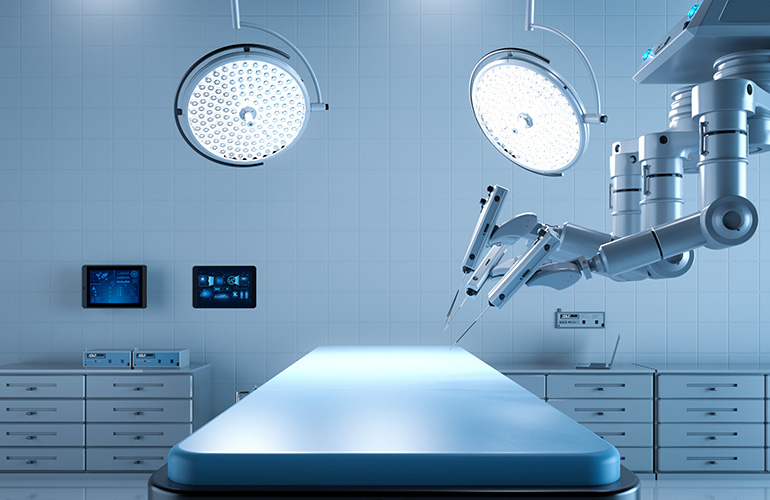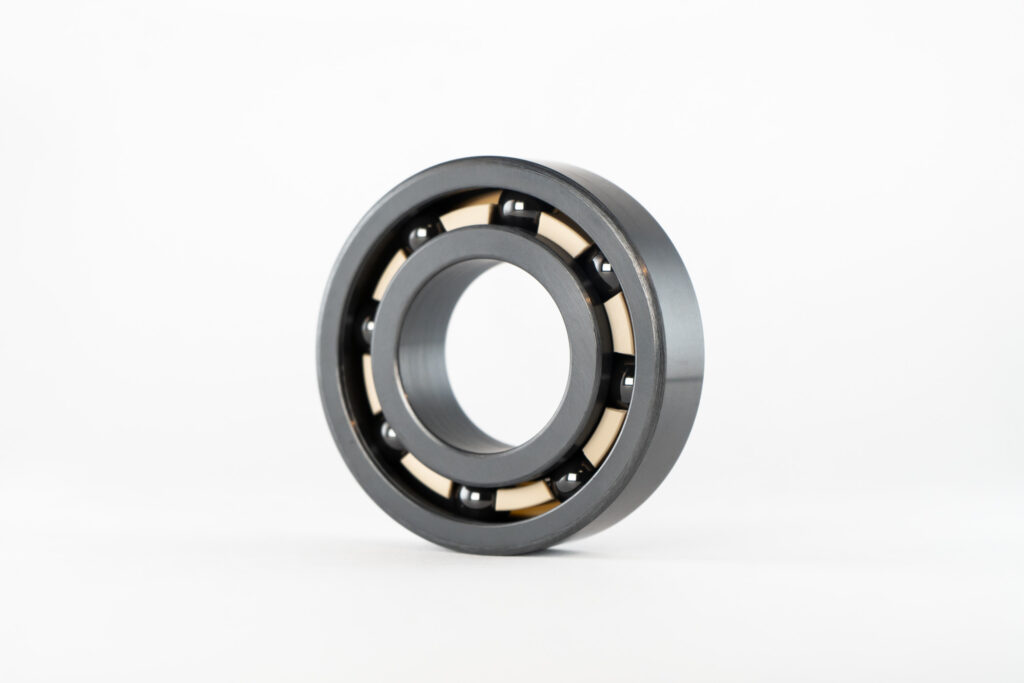|
Listen to this article |

Chris Johnson predicts that future medical robots will be used more to provide patients with emotional support than as tools. | Source: SMB Bearings
Robots are on the rise in medical environments and are being increasingly relied upon to carry out more complex procedures. Although martensitic stainless steels have been favored for bearings in robot applications, their performance is falling short against rising standards to prevent contamination in medical environments.
GlobalData predicted that the medical robotics market will rise from $4.7 billion in 2020 to $14.5 billion in 2030. The analyst firm said those robots will “be cast more as companions providing emotional support, rather than seen as tools.” The quote refers to artificial intelligence becoming more advanced, allowing robots to offer more therapeutic support to patients in ways we can’t imagine today and to counter staff shortages.
From surgical assistance robots that help perform minimally invasive procedures to therapeutic robots to aid rehabilitation for injuries and paralysis, the technology has come a long way since simple robotic arms were first introduced in the 1980s. Although surgical robots are becoming cheaper, modern medical applications are also demanding higher precision and speed capabilities from these robots.
Traditionally, in medical instruments, bearings — which optimize the rotation of axes in robot arms by limiting or avoiding friction and jolts — have been made from high-purity metals such as martensitic stainless steel. Examples include medical robots that help undertake keyhole surgery where the utmost precision is required. Surgical robot bearings must deliver the highest possible rotational accuracy while also being small enough to fit into these often compact and portable hospital devices.
However, steel bearings have limitations including contamination. While steel bearings are tough and capable of withstanding highly corrosive environments, they are susceptible to particulate contamination due to the very high contact pressures against the steel within the bearing while it moves. If left unchecked, this contamination can cause denting and wear.
Of course, contamination in general is unacceptable in health and safety environments. As robots become more prevalent in medical applications, regulations are getting stricter to prevent contamination.
 Learn from Agility Robotics, Amazon, Disney, Teradyne and many more.
Learn from Agility Robotics, Amazon, Disney, Teradyne and many more.
Ceramic can replace steel, says SMB Bearings
All of these factors influence the choice of material for bearings in medical environments — but what material can replace steel? The medical equipment sector is increasingly choosing bearings made exclusively of zirconia (ZrO2), or other exotic ceramic compounds. According to the Institute of Materials, Minerals, and Mining, “ceramic bearings made from ZrO₂ are tough, with similar expansion properties to chrome steel and 440 stainless steel, although they are 30% lighter.”
Indeed, full ceramic precision bearings are harder than steel, with superior corrosion and heat resistance, higher dimensional stability, and lower density. However, ceramic bearings are expensive. This is a big issue for health institutes that operate within tight budgets, so the decision to invest in them must be well-considered. Fortunately, ceramic bearings hold a number of advantages for medical environments.
One is that the bearings don’t react to chemicals. That means they don’t corrode or weaken when subjected to harsh chemicals used for sterilization in hospitals. Ceramics don’t require lubrication that would otherwise draw contaminants like dust, water, or humidity. This also eliminates the need for maintenance processes like relubrication. Ceramic bearings are also water-resistant, so can be washed down regularly.
The need to avoid contamination accompanies other design requirements such as high speeds, low noise, and non-magnetic properties. For instance, because magnetic resonance imaging (MRI) scanners use a strong magnetic field to generate two- or three-dimensional images of any living subject, steel bearings cannot be used due to their magnetic properties.

SMB Bearings says ceramic bearings hold a number of advantages for medical environments. | Source: SMB Bearings
Invest in the right materials for high-value applications
So, is investing in ceramic bearings for medical environments worth it? There are still certain applications where the speed and precision of steel are crucial, like in surgical robots. However, there are other instances where using the wrong components in such medical or laboratory equipment can contaminate study conditions or cause the study to cease altogether.
Instead, the extra investment in ceramic bearings can help ensure that medical robots run with effectiveness and longevity — especially as they are “cast more as companions providing emotional support, rather than seen as tools.”
 About the author
About the author
Chris Johnson is the managing director at SMB Bearings, a specialist ceramic bearings supplier. Johnson has over 14 years of experience at SMB Bearings.
